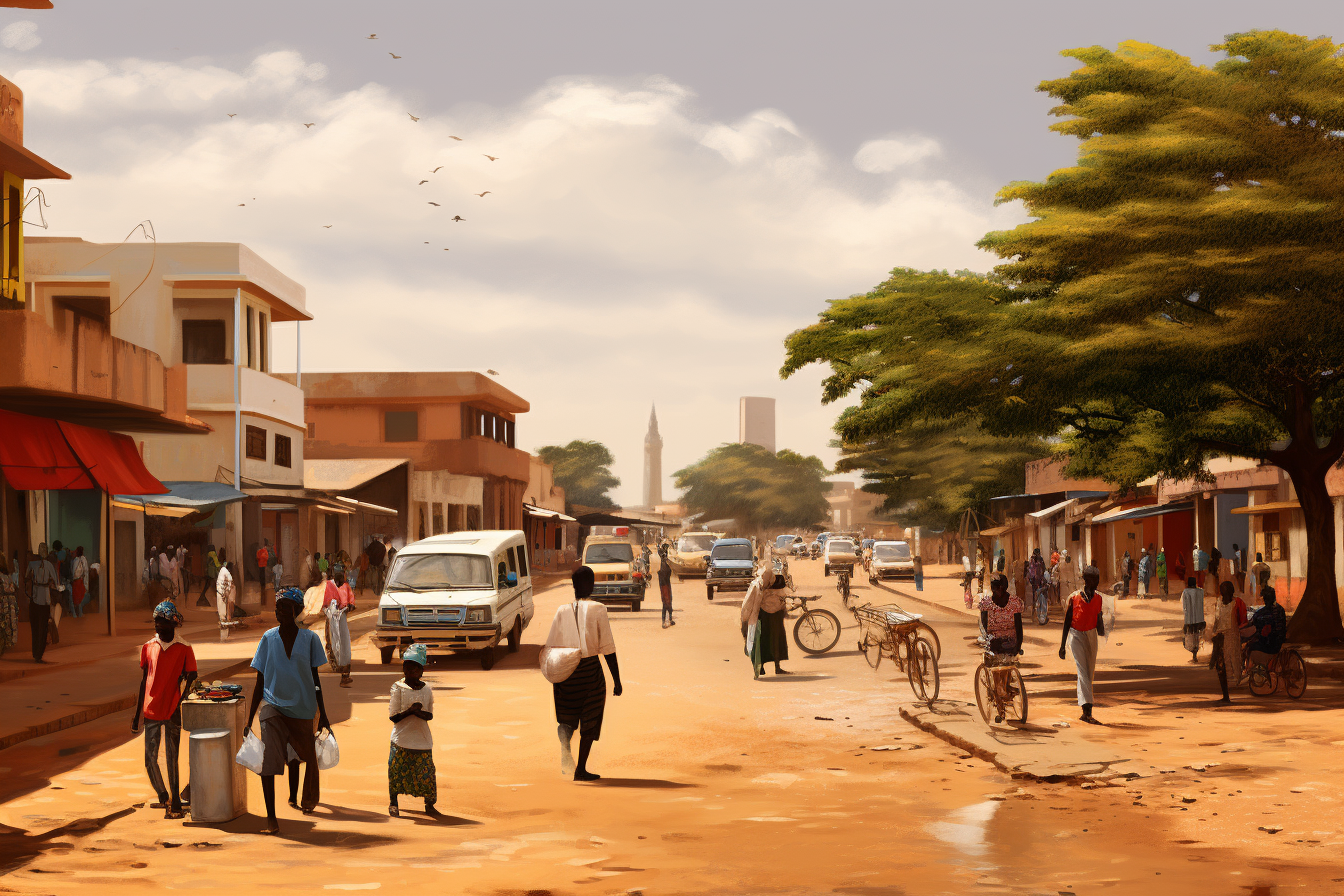A Timeline of Burkina Faso
A broad timeline of Burkina Faso.

Paleolithic Era (circa 14,000 BC - 8,000 BC)
During this period, the region that is now Burkina Faso was inhabited by nomadic hunter-gatherer groups. They relied on stone tools for hunting and left behind evidence of their presence in the form of stone artifacts and remnants of ancient campsites.
Neolithic Transition (circa 8,000 BC - 5,000 BC)
As the climate became more favourable, there was a gradual shift from hunting-gathering to settled agriculture. Early inhabitants began to domesticate animals and cultivate crops. This transition is evident from archaeological sites that show remnants of early farming communities and pottery.
Emergence of Trade Networks (circa 5,000 BC - 2,000 BC)
With the growth of settled communities, trade networks began to emerge. The region's strategic location made it a crossroads for trade routes connecting the Sahara, West Africa, and the Niger River basin. Evidence of early trade can be seen in the form of exotic beads, shells, and other trade goods found at archaeological sites.
Iron Age and Early Societies (circa 2,000 BC - 100 AD)
The introduction of ironworking technology marked a significant advancement. Iron tools and weapons revolutionised agriculture and warfare. The period also saw the emergence of more complex societal structures. Settlements grew in size, and there's evidence of early fortifications and more sophisticated pottery styles.
Growth of Trade Settlements (100 AD - 500 AD)
As trade routes across the Sahara and West Africa became more established, settlements in Burkina Faso began to grow in importance. These settlements acted as trading hubs, facilitating the exchange of goods like gold, salt, and kola nuts between the Sahel, coastal West Africa, and North Africa.
Emergence of Regional Powers (500 AD - 800 AD)
During this period, some communities began to consolidate power, leading to the formation of early regional chiefdoms. These chiefdoms controlled trade routes and had influence over surrounding settlements. They also played a role in the spread of cultural and religious ideas, including the gradual introduction of Islam from North Africa.
Cultural and Technological Advancements (800 AD - 1000 AD)
The region saw advancements in metallurgy, especially in the working of iron and bronze. Craftsmanship flourished, with intricate works in metal, clay, and wood. There's also evidence of terracotta statues from this period, suggesting a rich cultural and religious life.
Precursors to the Mossi Kingdoms (1000 AD - 11th century)
Towards the end of this period, migrations and invasions began to shape the political landscape of Burkina Faso. The ancestors of the Mossi people started to move into the region. These early Mossi warriors and settlers laid the foundation for the powerful Mossi kingdoms that would dominate the region in the subsequent centuries.
Formation of the Mossi Kingdoms (11th century - 13th century)
The Mossi Kingdoms began to emerge in the 11th century, with the establishment of dynastic ruling families in regions like Ouagadougou, Yatenga, and Gourma. Through conquest and strategic alliances, these early kingdoms expanded their territories, setting the stage for a period of Mossi dominance.
Influence of the Mali Empire (13th century - 14th century)
In the 13th century, the northern parts of Burkina Faso experienced the influence of the Mali Empire. As one of West Africa's most powerful empires, Mali introduced Islam to the region, leading to its gradual adoption alongside traditional beliefs.
Consolidation of Mossi Governance (14th century)
While under the influence of the Mali Empire, the Mossi kingdoms retained a degree of autonomy. They developed sophisticated administrative structures, with centralised authority under a king or "Naba." These rulers, while powerful, were guided by councils of elders and traditional institutions.
Rise of the Songhai Empire (15th century - 16th century)
Following the decline of the Mali Empire, the Songhai Empire rose to prominence. The northern regions of Burkina Faso once again came under the influence of a major West African empire. The Songhai continued the spread of Islam, further entrenching it as a dominant religion in the region.
Trade, Culture, and Mossi Resilience (15th century - 17th century)
The Mossi kingdoms, situated between the Sahel and the forested regions of West Africa, played a pivotal role in trans-Saharan trade. This period saw a blend of Islamic and traditional influences, enriching the cultural tapestry of the region. Despite external influences, the Mossi states maintained their identity and often negotiated terms that preserved their autonomy.
Conflicts and Decline (17th century - 19th century)
Facing external threats from empires and, later, European colonial powers, the Mossi kingdoms demonstrated remarkable resilience. However, by the late 19th century, challenges from the French colonial expansion marked the beginning of the end for the Mossi dominance.
European Exploration and French Colonisation (late 19th century - 1960)
European explorers began to show interest in the region in the late 19th century. By the early 20th century, France had established control, incorporating it into French West Africa as Upper Volta. The period saw infrastructural developments but also resistance against colonial rule.
Independence and Political Instability (1960 - 1980s)
Burkina Faso gained independence from France in 1960. The subsequent decades were marked by political instability, with numerous coups and changes in leadership. One notable leader during this period was Thomas Sankara, who implemented radical reforms during his tenure.
Era of Blaise Compaoré (1987 - 2014)
Blaise Compaoré came to power in 1987 after a coup that led to Sankara's assassination. Compaoré's rule, which lasted for 27 years, was marked by economic reforms and relative stability, but also allegations of human rights abuses.
Democratic Aspirations (2014 - Present)
Following popular protests in 2014, Compaoré was ousted from power. Since then, Burkina Faso has been working towards consolidating its democratic institutions. However, the country faces challenges, including terrorist threats and socio-economic issues.





